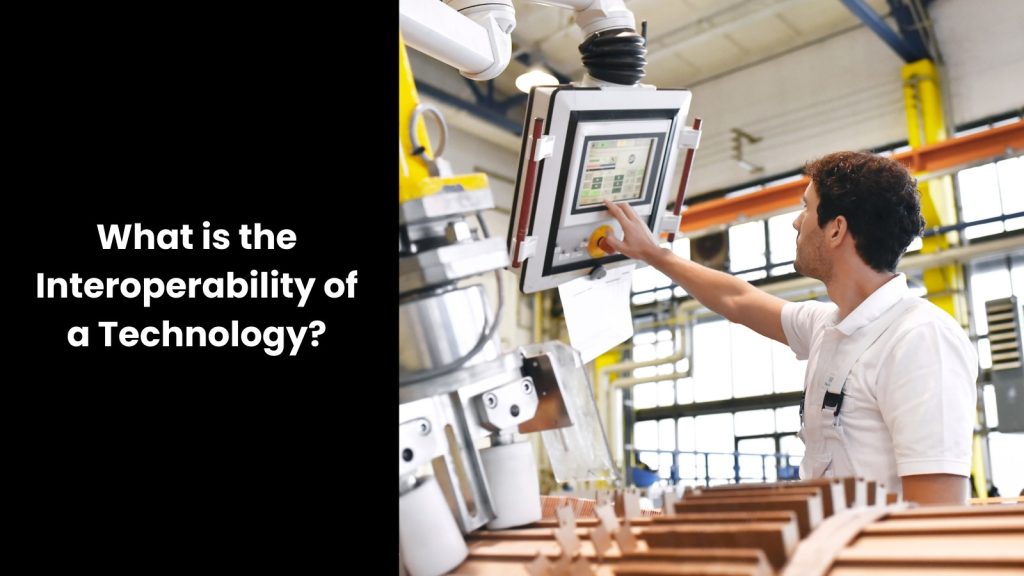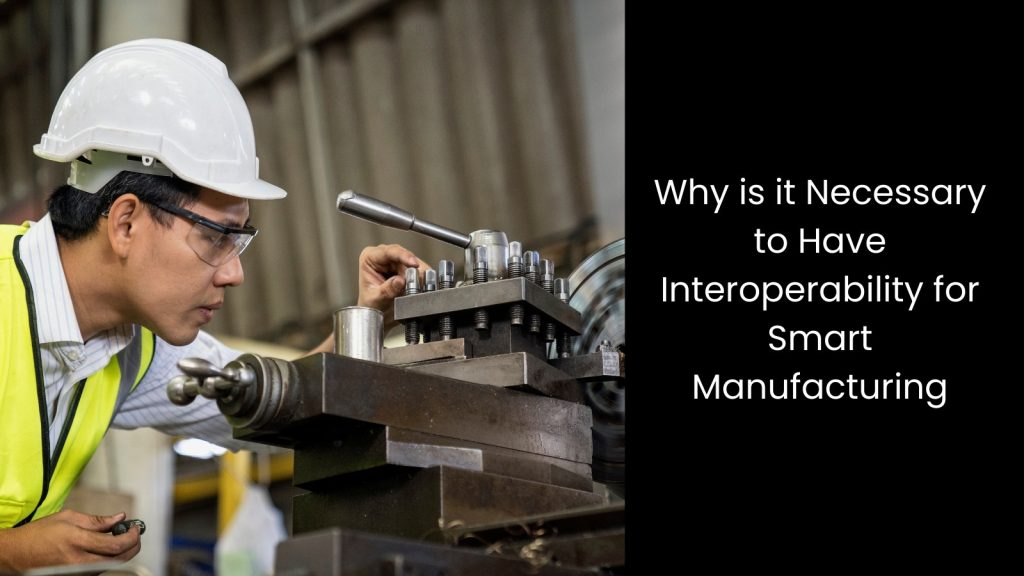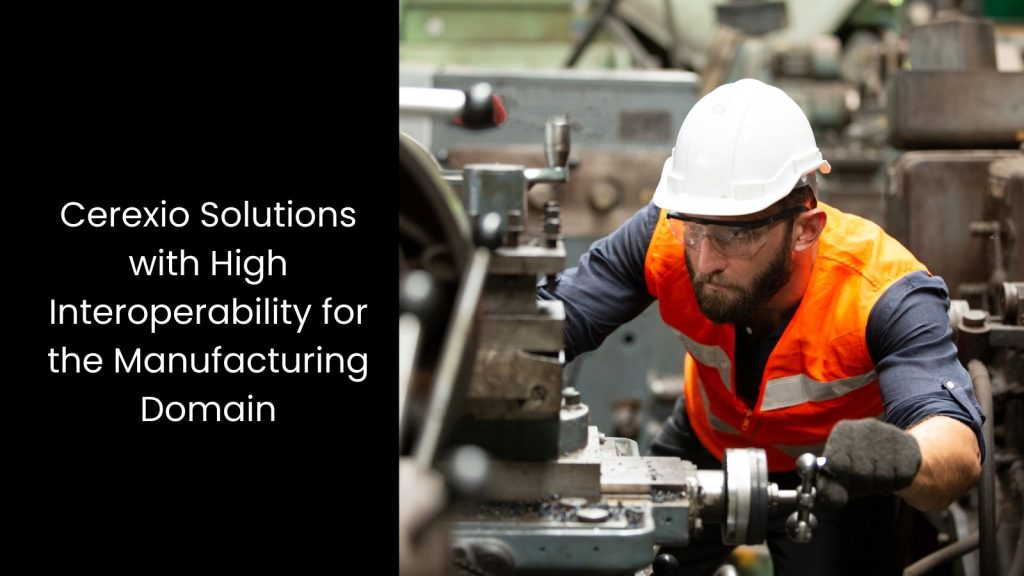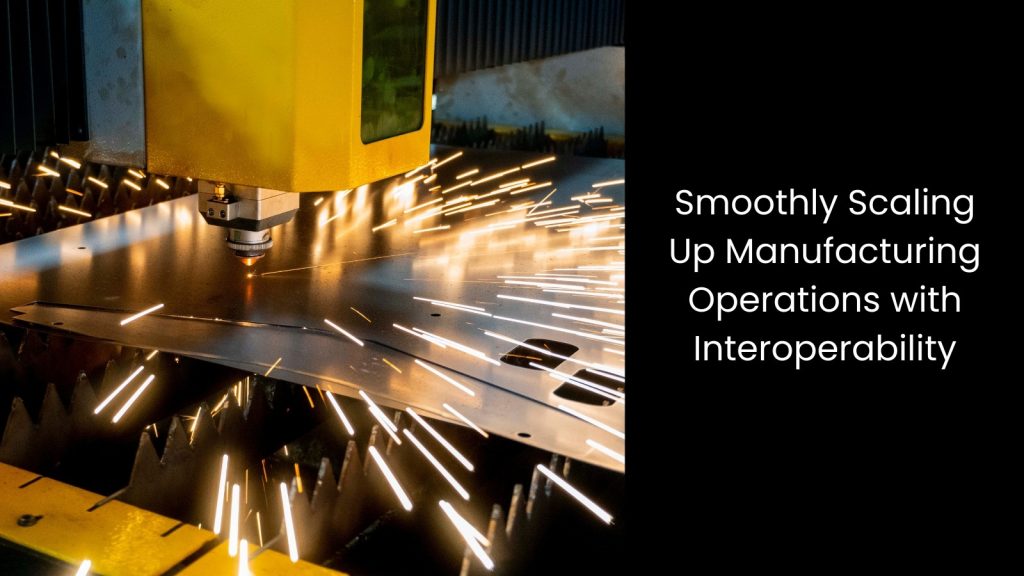In the dynamic Singaporean industrial landscape, activating interoperability in smart manufacturing has become a main factor for success. Do you agree? Now, we have stepped into an era where manufacturing companies emphasise having this before they integrate a software solution. Interoperability ensures that the traditional manufacturing landscape becomes ‘smarter’, connecting with various elements inside of a software solution or technological capability.
This article will act as a guide for you to understand the role of interoperability in smart manufacturing in Singapore.
We will reveal
What is the Interoperability of a Technology?

- Interoperability in technology or software refers to the ability of different systems or programs to work together smoothly and effectively.
- This means that even if the devices come from different manufacturers or run different operating systems, they can still communicate and share data seamlessly. Interoperability allows different technologies or software solutions to understand and use each other’s data, functions, and services without needing special adjustments.
- For example, if you use a CRM app on your smartphone, interoperability lets it share your data with an ERP app on your tablet. This seamless connection helps you get a complete picture.
- Achieving interoperability usually involves adhering to common standards or protocols that ensure compatibility between systems. These standards act like a universal language, allowing different technologies to ‘speak’ to each other.
- With interoperability, technology can become more efficient and user-friendly, enabling systems to integrate, share resources, and improve overall performance. This capability also supports flexibility, allowing users to mix and match different technologies to suit their needs without worrying about compatibility issues.
Why is it Necessary to Have Interoperability for Smart Manufacturing

Data Integration
In a smart manufacturing environment, interoperability plays a crucial role in data integration, which is essential for optimising production processes. We will analyse how this unfolds.
Interoperability allows for the seamless integration of data from various sources, such as machines, sensors, and enterprise systems. This will enable a unified view of the manufacturing process. This means that different types of equipment and software can work together without any hitches, sharing information and insights in real time.
For example, if machines on the production line, sensors monitoring equipment performance, and software systems tracking inventory can all communicate effectively, they create a comprehensive picture of what is happening in the factory. This unified view helps manufacturers monitor operations closely, spot issues quickly, and make informed decisions based on complete and up-to-date data.
In a smart setting, where efficiency and precision are key, having access to integrated data allows for better coordination between different parts of the production process. It helps in predicting potential problems before they occur. Also, it optimises resource usage and improves overall productivity.
When systems are interoperable, they can automatically share data and insights, which reduces the need for manual data entry and minimises errors. This efficiency is essential because it ensures that production runs smoothly and resources are used effectively.
Quality Assurance
It helps integrate quality control systems across different stages of production.
This indicates that interoperability supports consistent quality assurance processes by ensuring that various quality control systems, such as those monitoring machine performance and those checking product quality, can work together seamlessly. This integration aids manufacturers to track and manage quality throughout the entire production process.
For instance, if a quality control system on the production floor can communicate with a data analytics platform, it can provide real-time feedback and detect issues immediately. This helps maintain high product standards and ensures that deviations from the desired quality are identified and addressed quickly.
So, as it is evident, having interoperable systems means that manufacturers can maintain consistent quality across all products. It eliminates the risk of quality issues going unnoticed and allows for quick adjustments to be made if problems arise. As it connects various quality control tools and systems, interoperability ensures that every stage of production is aligned with the quality standards, leading to fewer defects and higher customer satisfaction.
This capability particularly helps companies meet stringent quality requirements and adapt to changing production demands while maintaining high standards.
Cost Efficiency
Yes, you read this right! It certainly simplifies system integration and reduces maintenance expenses. Let’s see how this goes.
Since it can allow different systems and devices to work together seamlessly, interoperability eliminates the need for custom integration solutions. This means that manufacturers do not have to invest in expensive, specialised tools or software to connect various machines and systems. Instead, they can use standard protocols and interfaces that enable different technologies to communicate effectively with each other. This ease of integration helps cut costs associated with setting up and maintaining complex systems.
In another way, interoperability minimises disruptions in production by ensuring that new equipment or software can easily connect with existing systems. When systems are compatible and can share information smoothly, manufacturers avoid costly downtime and interruptions caused by technical issues or system incompatibility. This streamlined operation helps in maintaining a steady production flow and reduces the need for frequent repairs or adjustments.
In the context of smart manufacturing, this capacity allows companies to invest more in innovation and process improvement rather than in resolving integration problems. By using interoperable technologies, manufacturers can save on both initial setup costs and ongoing maintenance, which contributes to better overall financial performance.
Flexible Manufacturing Systems
This means that when manufacturers need to update their processes or introduce new tools, interoperable systems make it straightforward to incorporate these changes without major disruptions.
For example, if a company wants to add a new type of machine to its production line, interoperability ensures that this machine can easily connect and work with existing systems. It allows the new machine to communicate with other equipment and software, enabling seamless integration into the current setup. This flexibility is particularly important in a smart manufacturing environment where production needs can change rapidly due to market demands or technological advancements.
If they can start using interoperable systems, manufacturers can quickly adjust their operations to meet new requirements or take advantage of emerging technologies. This adaptability helps companies stay competitive by enabling them to innovate and improve their processes efficiently.
Not to mention that interoperability reduces the time and cost associated with integrating new technologies since it avoids the need for custom solutions or extensive modifications. The result is allowing manufacturers to remain agile, integrating new equipment effortlessly, and responding to market changes quickly.
Cerexio Solutions with High Interoperability for the Manufacturing Domain

It is not a secret that Cerexio Solutions excels in the manufacturing domain with our high interoperability, allowing seamless integration across various systems and technologies. This flexibility allows for smooth adaptation to new processes and equipment. Powered by advanced Digital Twin capabilities, Cerexio Solutions ensures enhanced connectivity and real-time data synchronisation, significantly boosting interoperability and operational efficiency in smart manufacturing environments.
Smoothly Scaling Up Manufacturing Operations with Interoperability

If you have read the whole article, you no longer can be in doubt about the fact that interoperability empowers manufacturers to scale operations with ease and precision. As you can see, the seamless integration of diverse technologies streamlines processes reduces costs, and supports agile responses to market changes. This is why we emphasise prioritising interoperability, as it paves the way for sustained success and growth.

